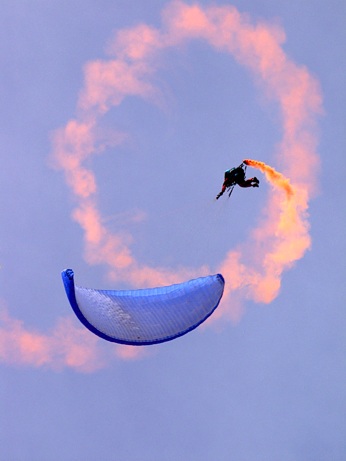Do you wish to put your advertisement on this page ?
The DHV recommended that spiral dives should only be taught over water on SIV clinics and not to beginners. They added that spiral dives should only be used as an emergency procedure and, in any case, recommended all pilots exit a spiral at least 300 metres above ground level. Chest strap setting on the harness: The wider you have set your chest strap, the better your glider will recover from spirals. Since intermediate pilots generaly fly with a narrowed chest strap setting, this could well be one of the contributory factors in some of the fatal accidents.
Weight: Gliders are more spirally unstable when the wing is more highly loaded.
Cross bracing make a glider more spirally unstable. This includes ABS, which most pilots use.
The speed with which a pilot applies the brakes when entering a spiral.
The amount of weight shift applied as a pilot enters a spiral, as well as the amount used once established in the spiral.
The centre of gravity of the pilot. The lower centre of gravity is, the more likely the glider will be to stay in a spiral. This is very important when considering where to position any ballast.
The certification bodies do their best to test gliders in a standard way that reflects the way pilots fly their gliders in practice. However, with all these variables, it's easy to see how a certified glider could be found to be spirally unstable under certain circumstances. The spiral dive is an advanced flight manoeuvere and should not be taught to low airtime students.
Spirals should be first practised over water on SIV courses before they are done over the ground.
To exit from a spiral all you need to do is to weight shift and steer out of the turn. The earlier you exit the spiral the easier it is.
In spirals of particularly high descent rate, the brake pressure may become very high and the pilot may by physically unable to apply enough outside brake. In this case first try using both hands on the outside brake. If all else fails, throw your reserve. Many of the pilots that died from spiral dives this year never threw their reserve parachutes. Remember, high G-forces can stop you thinking straight.
|
|
|

